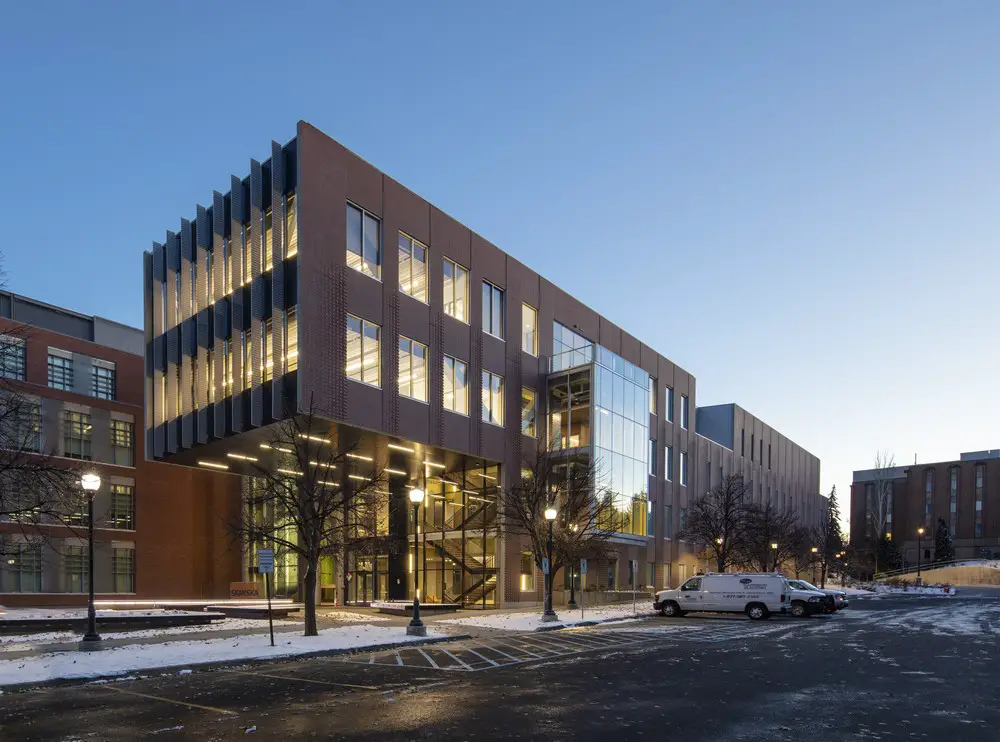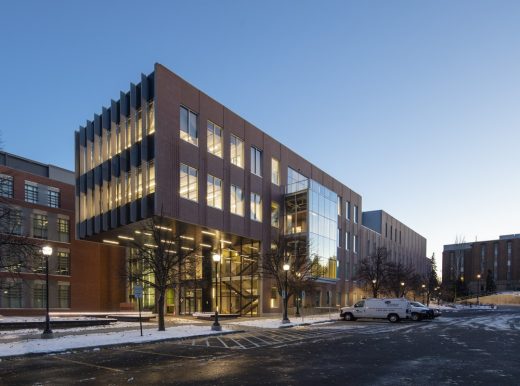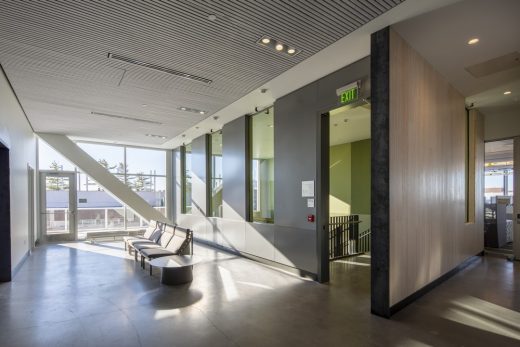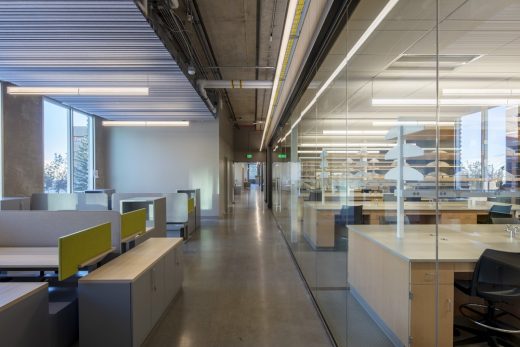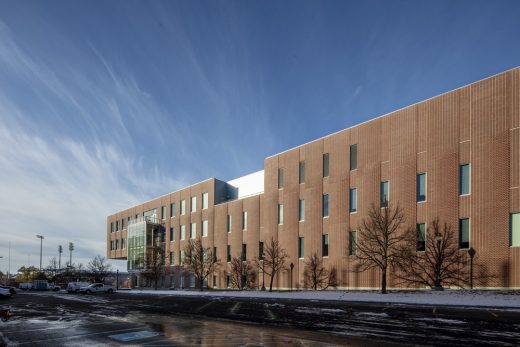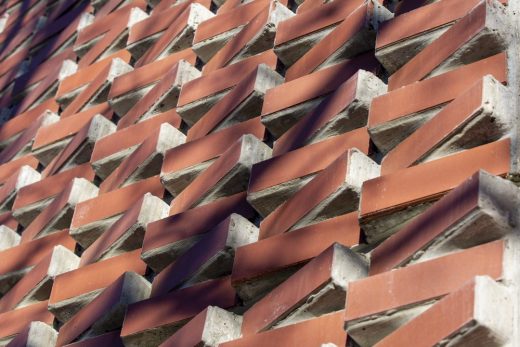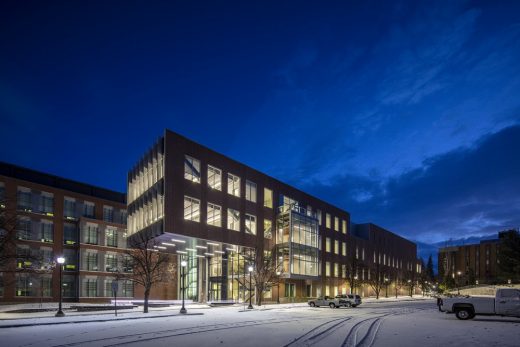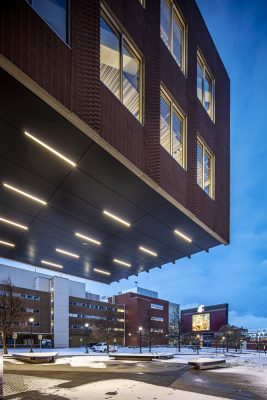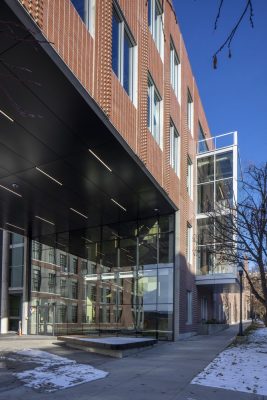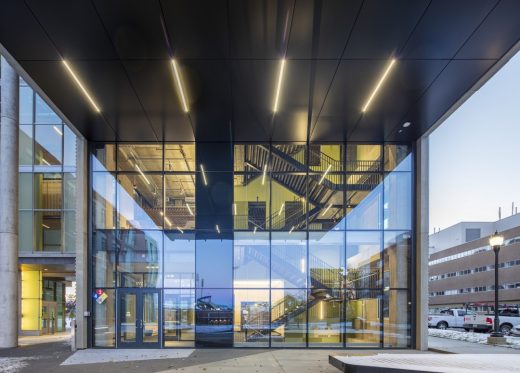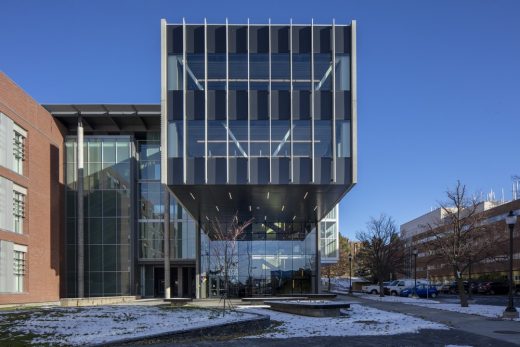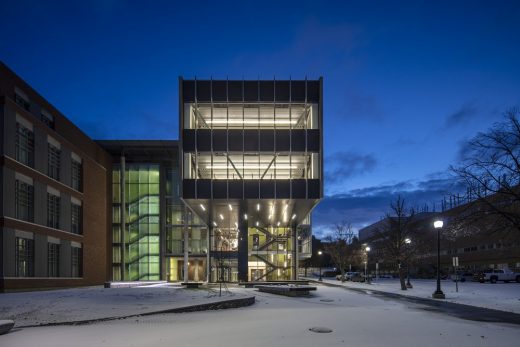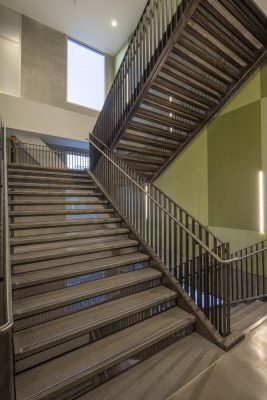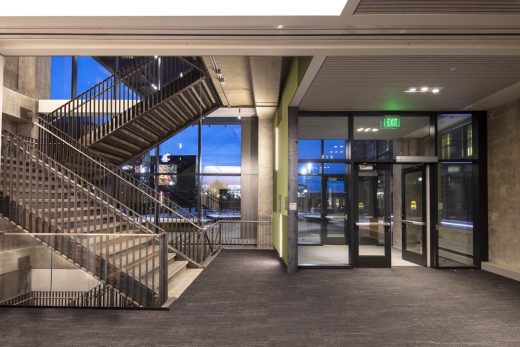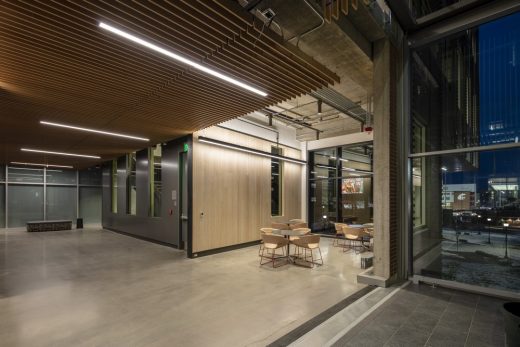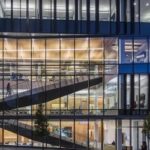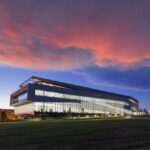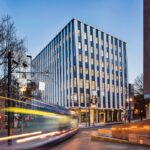Plant Sciences Building, Washington State Project, North American Modern Campus, US Architecture
Plant Sciences Building in Washington
Architects: LMN
Location: Washington, USA
Photos by Adam Hunter/LMN Architects
Nov 16, 2019
Plant Sciences Building, WA
The Plant Sciences Building is the fourth to be completed within the master plan for the Research and Education Complex (REC) at WSU, originally developed by LMN Architects in 2005. The master plan envisioned a series of laboratory buildings alternately flanking a glazed spine element that serves as the connective tissue for the social and research life of the complex. The new building is positioned to the south of the Biotechnology and Life Sciences building, also designed by LMN Architects, and completed in 2009. As the central element of the completed complex, the building forms a prominent primary entry point that frames a new public space along Stadium Way.
“The new Plant Sciences Building marks a significant milestone in Washington State’s commitment to sustainable agriculture and ecological stewardship,” says LMN Partner Stephen Van Dyck, AIA. “As a central element of the Research and Education Complex, the new building provides state-of-the-art research facilities that are interconnected to the culture of research on the Washington State University campus. As a central node of the interdisciplinary complex, the building is designed to nurture collaborative innovation in this critical sector.”
The plan configuration of the building allows it to fulfill the master plan while accommodating an existing utility tunnel to the south – a formal adjustment to the master plan which unlocked significant opportunities in construction cost and schedule savings. At the western entry, the building’s cantilevered composition frames a new grand entry to the whole complex, and features a two-floor cantilever facing west towards Martin Stadium. The new landscaped approach creates a multifunctional public space for the university, celebrating arrival to the complex and fostering campus-wide gatherings.
The new facility will be a social and interdisciplinary heart for the research complex. Designed for flexibility well into the future, the building hosts infrastructure for a variety of research needs beyond the College of Agricultural, Human, and Natural Resource Sciences. Upon arrival, a welcoming four-floor staircase encourages vertical circulation and provides important visual connections between floors. At every level, centralized social spaces link circulation elements with the REC’s central spine, designed to fuel spontaneous collaboration within the communal core.
The interior arrangement of laboratories is designed to support efficient and flexible research over time. The modular laboratories can be easily rearranged to respond to the changing needs of research throughout the building. To the north of the modular laboratories, offices for Principal Investigators are interspersed with open work areas for graduate researchers. To the south of the laboratories, a series of modular support spaces accommodate a variety of specialized research equipment within easy reach of the adjacent lab benches.
On the exterior, the building reimagines the red-brick campus vernacular in a new architectural approach; a high-performance precast concrete façade panel system is clad with a sculpted, red-brick veneer. The panels integrate structure, insulation, weather barrier, interior, and exterior finishes within a single prefabricated component, accelerating construction sequencing and enabling a bespoke composition of organically inspired brick surfacing. The resulting building form presents an abstract composition culminating in the integration of the building’s internal modular planning with the panelized façade components.
Jennifer Milliron, Principal, comments: “We have approached the design and delivery process for this building as an effort in applied research. Our Progressive Design-Build team partnered with WSU early in the process and prioritized innovative design and construction methods. Our partnership with Skanska allowed our team to explore integrated design and construction opportunities that prioritized high-performance systems, opening opportunities for architectural expression while simultaneously maximizing construction efficiencies.”
The building’s prefabricated façade system both enhances the speed of the construction schedule and transforms the architectural possibilities throughout the building. On the inside, the integrated concrete panels are left exposed to become the finished surface in many of the building’s workspaces. On the exterior, the undulating brick pattern—made possible through CNC-driven formwork—casts shadows which animate the façade throughout the day in a dynamic play of light that is unique to the eastern Washington Palouse landscape.
LMN Architects is a leader in the design of higher education facilities across the United States. Other completed projects include the Bill & Melinda Gates Center for Computer Science & Engineering at the University of Washington; the Voxman Music Building at the University of Iowa in Iowa City; the Anteater Learning Pavilion at the University of California, Irvine; and the Huntsman School of Business Addition at Utah State University in Logan, Utah.
Plant Sciences Building at Washington State University, WA – Building Information
Architects: LMN
Location: Washington State University, Pullman, Washington
Client: Washington State University
Design Years: 2017-2018
Construction Years: 2018-2020
Major Building Materials:
Precast Concrete Panels with Brick Veneer, Curtainwall, and Composite Metal Panel
Program:
Wet Research Labs and Support Labs, Dry Research Labs, PI Offices, Growth Facility, MMPL Core Lab, 3 Meeting Rooms, 1 Large Conference, breakout collaboration and shared break room at each level, and Administrative Office Suite
Site Area: 133,775 SFT (12,428 m)
Floor Area: 82,437 SFT (7,659 m)
Building Height: 84 FT (26 m)
Number of Floors: 5
Project Team:
Dean Clark, AIA
Clint Cook, AIA
Stephen Van Dyck, AIA
Melissa Eby
Tiffani Erdmanczyk
Chuoc Lam, AIA
Evan McQuillen, Assoc. AIA
Jennifer Milliron, Assoc. AIA
George Shaw, FAIA
Sunmin Whang, AIA
Civil Engineer: Coughlin Porter Lundeen, Inc
Contractor & Construction Manager: Skanska USA Building
Landscape Architect: Berger Partnership
Lighting Design: MW Consulting Engineers
MEP Engineer: MW Consulting Engineers
Structural Engineer: Magnusson Klemencic Associates
Photography Credit: Adam Hunter/LMN Architects
Plant Sciences Building, Washington State University images / information received 161120
Location: Washington, USA
Washington Architecture
Washington Architectural Projects
Everett Grand Avenue Pedestrian Bridge, Everett
Design: LMN Architects
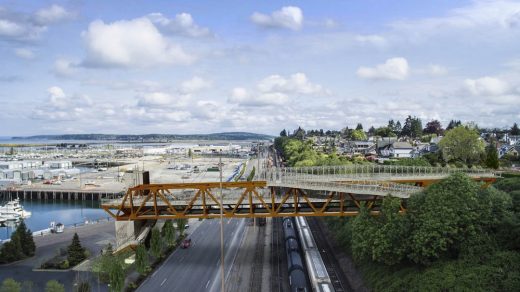
image Courtesy LMN Architects
Construction Photography Credit: Adam Hunter/LMN Architects
Everett Grand Avenue Pedestrian Bridge
Bailer Hill Residence, Friday Harbor, Washington, USA
Architects: Prentiss + Balance + Wickline
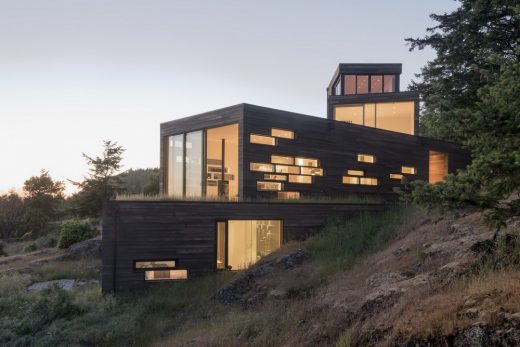
photography : Eirik Johnson
Residence at Friday Harbor
American Architecture Links – chronological list
North Bay House, San Juan Island, Washington, USA
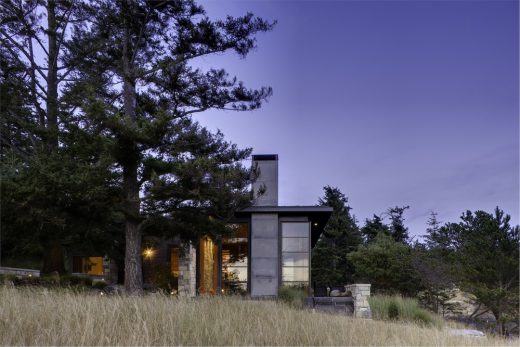
photograph : Jay Goodrich
House on San Juan Island
Washington State University Visitor Center
USA Building Designs
Contemporary Architecture in USA
Comments / photos for the Plant Sciences Building, Washington State University – page welcome

